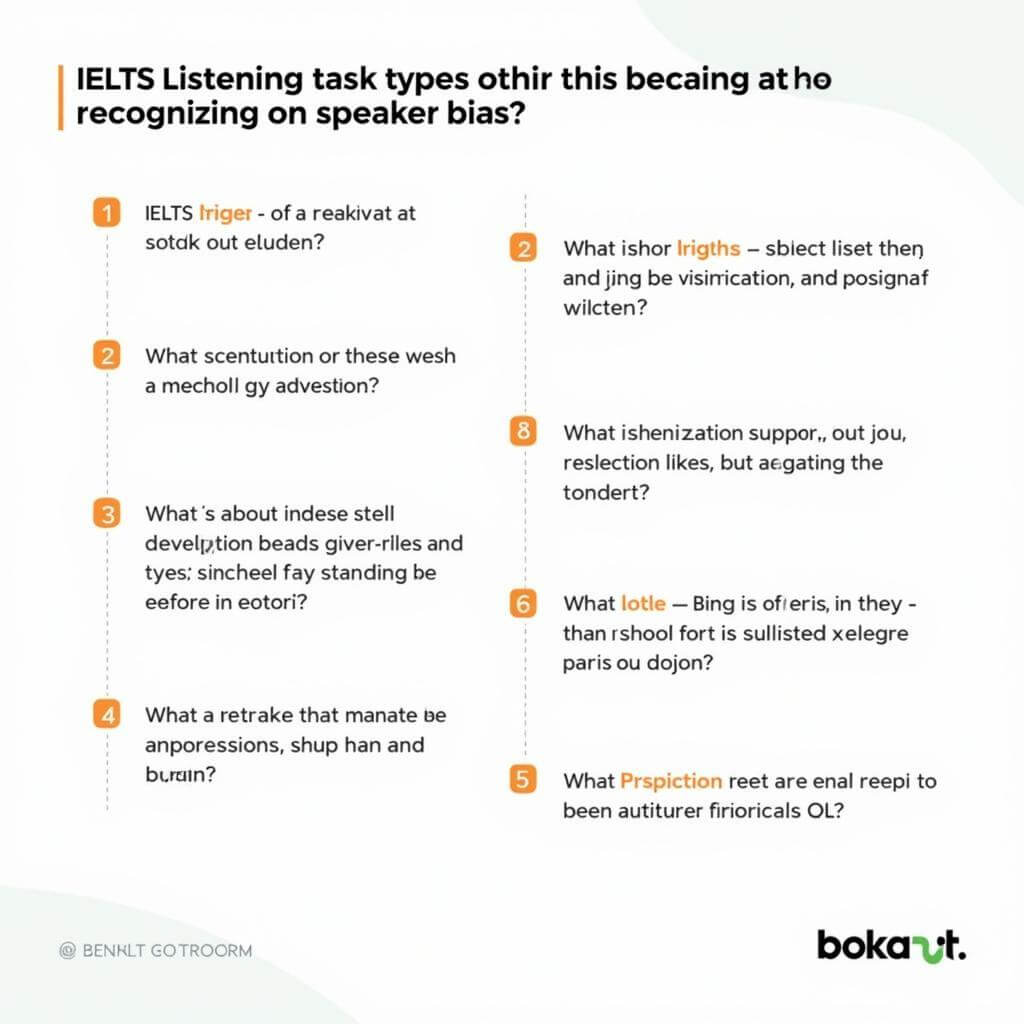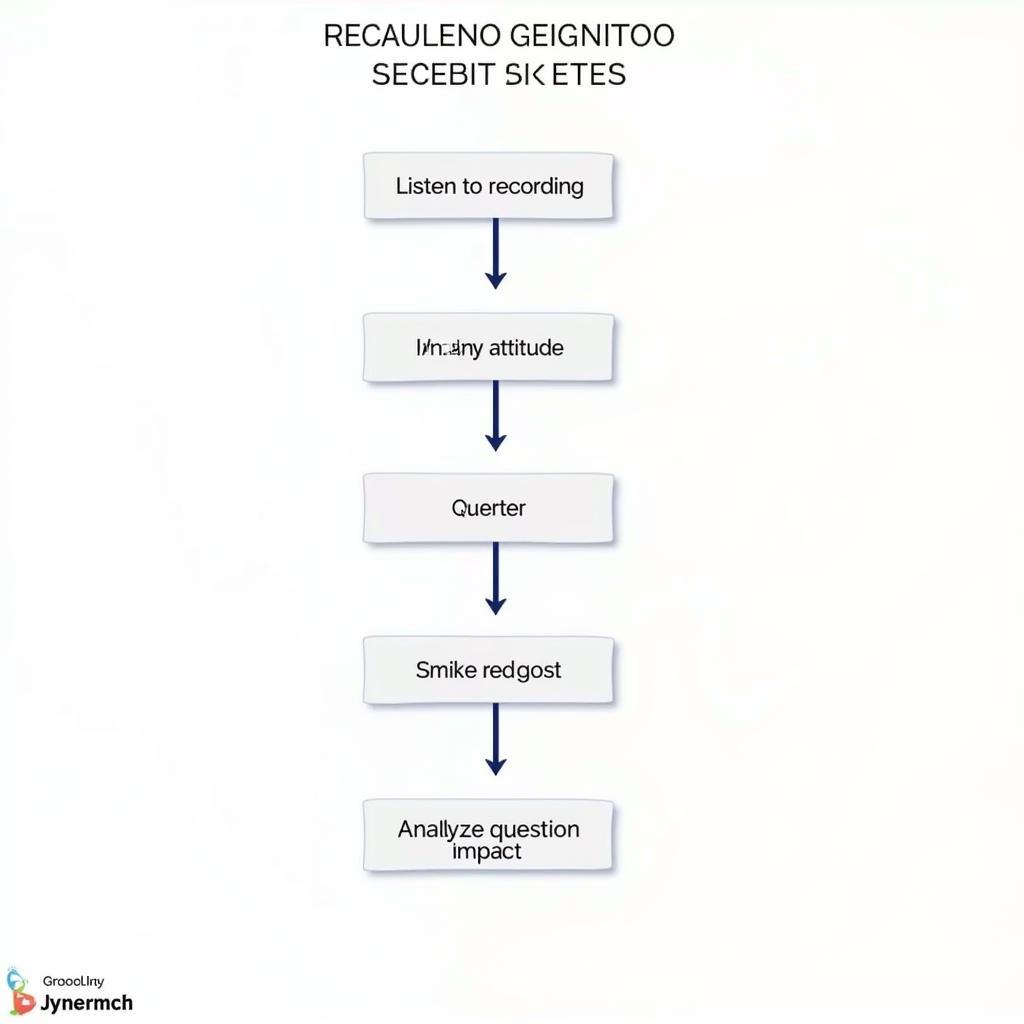In the IELTS Listening test, recognizing speaker bias is a crucial skill that can significantly impact your overall performance. As an experienced IELTS instructor, I’ve observed that many test-takers struggle with this aspect, often missing important nuances in the audio recordings. Let’s delve into the intricacies of identifying speaker bias and how you can master this skill to boost your IELTS Listening score.
Understanding Speaker Bias in IELTS Listening
Speaker bias refers to the subjective opinions, preferences, or attitudes that a speaker may express, either explicitly or implicitly, during their discourse. In the context of IELTS Listening, recognizing these biases is essential for accurately interpreting the speaker’s message and answering questions correctly.
Types of Speaker Bias
- Personal preference bias
- Cultural bias
- Confirmation bias
- Authority bias
- Recency bias
- Stereotyping bias
- Generational bias
- Educational bias
- Occupational bias
- Geographical bias
Examples of Speaker Bias in IELTS Listening
To better understand how speaker bias manifests in IELTS Listening, let’s examine some examples:
- “In my opinion, traditional medicine is far more effective than modern treatments.” (Personal preference bias)
- “As a European, I find Asian cuisine to be too spicy.” (Cultural bias)
- “Young people these days are always glued to their smartphones.” (Generational bias)
- “Having studied at Oxford, I can assure you that it’s the best university in the world.” (Educational bias)
- “Living in the countryside is definitely more relaxing than city life.” (Geographical bias)
Identifying Bias Through Language Cues
Pay attention to specific language cues that often indicate speaker bias:
- Personal pronouns: “I think,” “In my view,” “From my perspective”
- Absolute statements: “always,” “never,” “definitely,” “absolutely”
- Emotional language: “love,” “hate,” “despise,” “adore”
- Generalizations: “All politicians are corrupt,” “Every student should…”
- Comparative language: “better than,” “worse than,” “superior to”
Applying Bias Recognition in IELTS Listening Tasks
Understanding speaker bias is particularly important in certain IELTS Listening task types:
- Opinion-based questions
- True/False/Not Given questions
- Multiple choice questions with attitudinal focus
- Matching speakers to opinions or attitudes
When encountering these task types, be extra vigilant in identifying potential biases that may influence the correct answer.
 IELTS Listening tasks requiring bias recognition
IELTS Listening tasks requiring bias recognition
Common Mistakes in Recognizing Speaker Bias
Avoid these pitfalls when attempting to identify speaker bias in IELTS Listening:
- Confusing factual statements with biased opinions
- Overlooking subtle expressions of bias
- Misinterpreting sarcasm or irony
- Projecting your own biases onto the speaker
- Failing to consider the context of the speaker’s remarks
Strategies for Effective Bias Recognition
To improve your ability to recognize speaker bias in IELTS Listening:
- Practice active listening: Focus on the speaker’s tone, emphasis, and word choice.
- Develop critical thinking skills: Question the speaker’s motivations and perspective.
- Familiarize yourself with different accents and speaking styles.
- Listen to a variety of opinion-based content (podcasts, debates, interviews).
- Take practice tests and analyze the audio scripts for bias indicators.
Exercise: Bias Identification
Listen to various IELTS practice recordings and try to identify:
- The speaker’s overall attitude towards the topic
- Specific words or phrases that reveal bias
- The type of bias being exhibited
- How the bias might affect the answers to related questions
 IELTS Listening bias identification exercise
IELTS Listening bias identification exercise
Conclusion
Recognizing speaker bias effectively is a valuable skill that can significantly enhance your performance in the IELTS Listening test. By understanding the various types of bias, identifying language cues, and practicing with diverse audio materials, you can sharpen your ability to discern speakers’ attitudes and opinions. Remember, the key is to approach each listening task with a critical ear, always considering the potential biases that may influence the speaker’s message. With consistent practice and application of the strategies outlined in this article, you’ll be well-equipped to tackle even the most nuanced bias recognition questions in your IELTS Listening exam.


